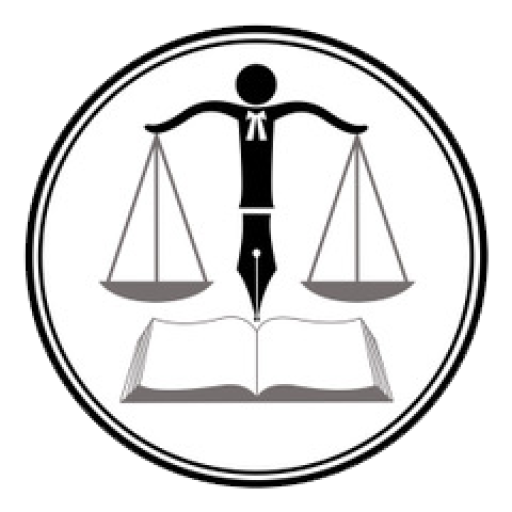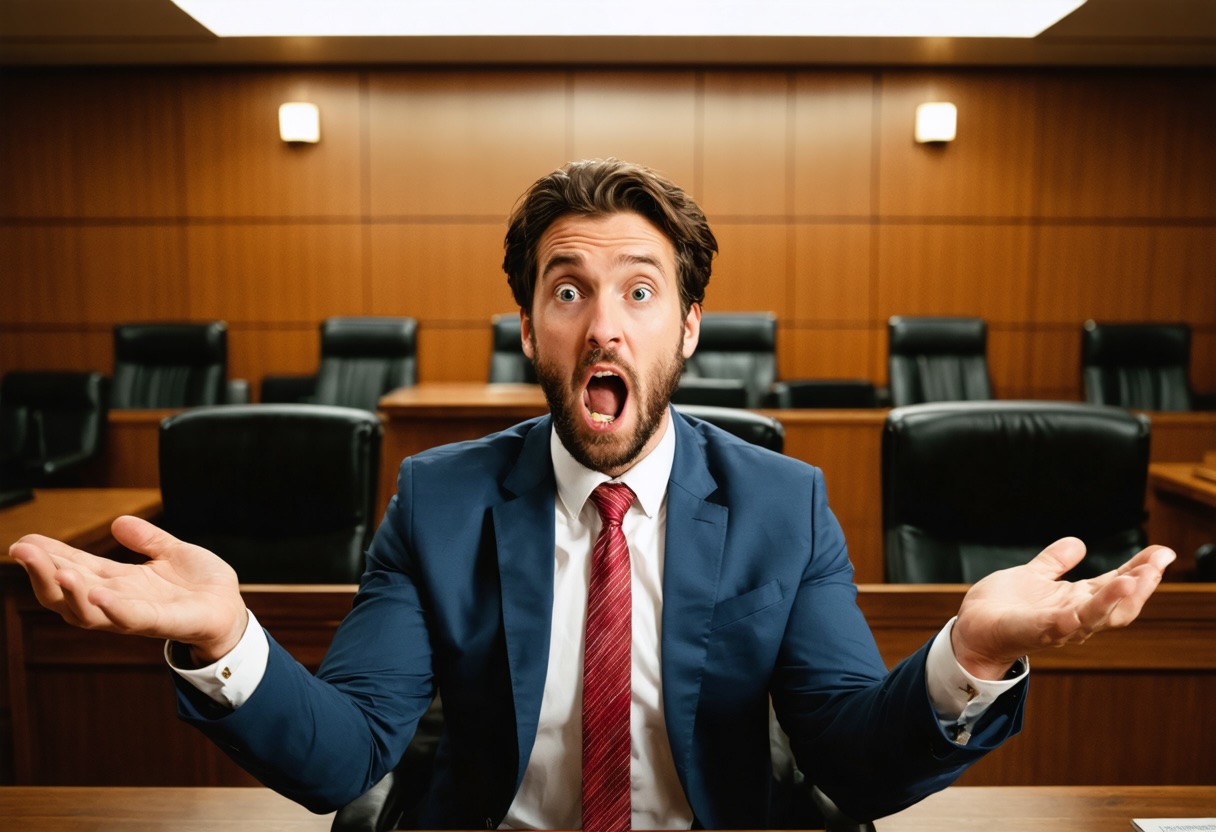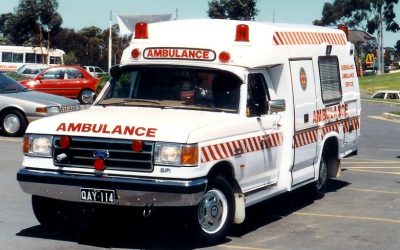This week’s top three summaries: R v BN, 2025 ABKB 535: #ineffective lawyer, R v Shah, 2025 ABKB 535: s.8 #informant, R v Mohamed Mussa, 2025 ABKB 543: #circumstantial ID
R. v. BN, 2025 ABKB 535
[September 18, 2025] Ineffective Assistance of Counsel [Justice C.D. Millsap]
AUTHOR’S NOTE: Judicial Courage and the Erosion of Competent Defence Representation
The principles in this decision are not novel — but the courage of the trial judge to apply them faithfully is, regrettably, an outlier in our current system.
In this sexual offence case, defence counsel acknowledged limited experience with such matters and failed to cross-examine the complainant before calling an alternative factual version from the accused. This was a clear breach of the rule in Browne v Dunn, which requires that significant differences in evidence be put to opposing witnesses. The trial judge correctly found the defect incurable and ordered a mistrial.
The broader implications are deeply troubling. Alberta’s criminal bar has seen a rapid influx of inexperienced lawyers in recent years, due in part to systemic pressures — including the 2022 legal aid job action, during which certificates continued to be issued while most senior counsel withdrew their services to demand proper funding. Many of those drawn into practice at that time have remained.
Yet, there is no meaningful oversight of quality of representation. The Law Society allows any lawyer to take on serious criminal cases regardless of experience. Legal Aid Alberta continues to assign complex matters — including sexual assault trials — to inexperienced counsel, and there are no mandatory education standards imposed on the bar.
The predictable result is now being felt daily: fundamental evidentiary rules ignored, cross-examination misapplied or omitted, and trials rendered unfair through sheer lack of competence. This case underscores the critical need for judicial intervention when the adversarial balance collapses. A fair trial presupposes two capable and informed parties. When that fails, the judge becomes the final safeguard of justice.
I. Introduction
[1] Courts rely on counsel in criminal trials to assist in safeguarding and ensuring trial fairness. In most cases, counsel fulfills this role. At times, however, counsel may be underresourced, overburdened, or inexperienced in ways that may present risks to trial fairness. Where lesser measures cannot address those risks and trial fairness has been irreparably compromised, a trial judge may, as a last resort, declare a mistrial.
[2] On May 2, 2025, after 5 days of trial with a jury, a mistrial was declared of the Court’s own motion. Due to the manner in which the defence of the Accused was conducted up to that point, it was determined that trial fairness had been irreparably compromised.
II. Law
A. Role of the Court
[3] One of the many roles of the Court is to act as a gatekeeper to ensure an accused person receives a fair trial, as well as to ensure that the administration of justice is not brought into disrepute during the conduct of the trial.
[4] Trial judges are vested with broad discretion to manage proceedings so that they unfold fairly, effectively, and efficiently: R v Samaniego, 2022 SCC 9 at paras 20-21 [Samaniego]. Judges may exercise this discretion to restrict irrelevant or argumentative cross-examination questions, ask questions if counsel fails to address an issue, correct inappropriate conduct by counsel or witnesses, and otherwise ensure a fair trial: R v Switzer, 2014 ABCA 129 at para 13; Samaniego at para 22. Judges are not expected to be “passive” or “sphinx judges”; at times, intervention is required to ensure justice is done: R v Brouillard, 1985 CanLII 56 (SCC) at para 17; see also Samaniego at para 22.
[5] ….Counsel are presumed to act competently: R v Lundle, 2023 ABCA 11 at para 14 [Lundle]. Decisions that may appear unwise, unconventional, or perplexing from the bench are assumed to reflect counsel’s broader understanding of the facts and context: Magotiaux J, Trial Judge’s Obligations at 2.
[6] Where, however, the absence of counsel or the absence of effective counsel threatens to undermine a fair trial or to imperil the liberty interest of the accused, there is a duty on trial judges to do what can be done to preserve trial fairness: R v CG, 2015 ONSC 2954 at para 49 [CG], aff’d 2018 ONCA 392, citing Justice Paciocco in The Case for Judicial Intervention for the Under-represented Accused.
B. Jurisdiction to Grant a Mistrial
[7] Trial judges have broad common law powers to declare a mistrial as a solution to a wide range of situations: R v Burke, 2002 SCC 55 at para 74 [Burke]. Although rarely exercised, that power includes the ability to do so on their own motion: see e.g. R v RE, 2025 ONSC 2795 at paras 7, 167 [RE]; R v Malito, 2021 ONCJ 174 at paras 1, 43; R v Ram, 2015 ONCJ 200 at para 1; R v Simon, 2017 ABQB 585 at para 38.
[8] A judge should only declare a mistrial where there is a real danger of prejudice to the accused and/or a miscarriage of justice: Burke at para 74; R v Cawthorne, 2016 SCC 32 at para 39; R v Burr, 2025 ABKB 449 at para 18. A miscarriage of justice can arise where a trial is unfair, or when the trial has the appearance of unfairness, viewed by a well-informed, reasonable person considering the whole of the circumstances: R v Khan, 2001 SCC 86 at para 73 [Khan].
[9] The trial judge is in the best position to assess the possible impact of an error on the jury, and the effectiveness of any warnings issued to the jury: Burke at para 75. The trial judge should consider the following before determining whether a trial has been unfair:
1. Did the irregularity pertain to a question which was central to the case against the accused?
2. What influence could the irregularity—or the cumulative effect of several irregularities—have had on the verdict, and how severe could any detrimental effects have been for the accused’s case?
3. Was it a trial by jury, for whom some irregularities can have a psychological effect, or by a judge sitting alone?
4. Was the irregularity remedied, in full or in part, at the trial?
5. The focus should be on the effect of the irregularity on the fairness of the trial and the appearance of unfairness, not on whether the irregularity was accidental or intentional.
6. What was the attitude of defence counsel if and when he was confronted with the irregularity (for example, if he failed to object to the irregularity despite having the opportunity to do so)? [citations omitted]
R v JMW, 2020 ABCA 294 at para 20, as stated by Khan at paras 75-85.
C. Ineffective Assistance of Counsel
[11] Inherent in the Right to Counsel afforded by the Charter of Rights and Freedoms, is that accused has a right to effective representation: R v Clarke, 2024 ABCA 346 at para 24. This is particularly so during the trial process.
[12] Effective representation serves two purposes. First, it enhances the reliability of the verdict by facilitating the adversarial process. Second, it promotes adjudicative fairness: R v Lundrigan, 2020 ABCA 281 at paras 59-61 [Lundrigan]. Counsel’s representations may result in a miscarriage of justice if they compromise trial fairness or undermine the reliability of the verdict: Lundrigan at para 67.
[13] Incompetence of counsel is best analyzed as a component of the right to a fair trial, and the right to make full answer and defence: R v Meer, 2015 ABCA 141 at para 43, aff’d 2016 SCC 5. When concerns about ineffective assistance arise mid-trial, they should be assessed through the framework for mistrial applications: CG at para 4.
[14] Ineffective assistance of counsel has two components: 1) a performance component where counsel’s acts or omissions constituted incompetence; and 2) a prejudice component where a miscarriage of justice resulted: R v White, 2022 SCC 7 at para 6. The decisions made by counsel at trial are assessed “against a reasonableness standard, with reference to the circumstances of this case at the time of trial and without benefit of hindsight”: Lundle at para 14.
III. Analysis
[15] The right to counsel and to choice of representation is a Charter protected right, and the Court must keep that fact in mind when engaging in this analysis: R v McCrimmon, 2010 SCC 36 at para 17.
[16]….When the conduct of defence counsel brings into question or raises a reasonable likelihood of a miscarriage of justice, the trial judge must intervene….
[18] There is presumption in favour of counsel’s competence in respect of tactical decisions made at trial: Lundle at para 14. As such, whether the questionable conduct of counsel throughout the trial is something that can be considered tactical or not must be considered. In this case, the analysis included not only the perceived legal errors made but also the comments of defence counsel during the mid-trial admissibility voir dire. Their candid admission regarding their lack of experience in both trials of this nature and with the particular voir dire process we undertook to determine if the alleged prior statement of the complainant could be tendered by the crown was also considered: something that this court considers a rather routine and uncomplicated issue.
[19] Importantly, this analysis also included what can only be characterized as a complete lack of cross-examination of the Complainant about the two alleged sexual assaults that make up counts one and two on the Indictment. It would be a massive leap to conclude that the failure to confront that Complainant on the specifics of the allegations or pose an alternative set of facts to her were tactical decisions made for the purpose of advancing a viable defence for the Accused. It can only be concluded that these were blatant errors that at a minimum offended the rule in Browne v Dunn and could have effectively robbed the Defendant of the ability to meaningfully deny the allegations. The latter point being particularly germane as the Defendant gave evidence that the alleged incidents did not occur.[Emphasis by PJM]
[20] Perfection is not the standard to be expected from defence counsel, as BN is not entitled to a perfect trial, only a fair one: R v Breitkreutz, 2025 ABCA 165 at paras 7, 56; A fair trial is one that allows the jury to pursue and evaluate the truth, and preserves “basic procedural fairness”: R v Harrer, 1995 CanLII 70 (SCC) at para 45. However, the only reasonable conclusion that could be drawn after the first 5 days of trial is that procedural and trial fairness had been compromised due to defence counsel’s conduct.[Emphasis by PJM]
[21] Ineffective assistance of counsel claims are most often raised on appeal following a conviction. However, it would be improper for a trial judge to sit idle when confronted with circumstances that would meet the test for appellate intervention; particularly, given that not every person can or will appeal for a variety of reasons, including due to financial constraints, lack of insight, or a loss of faith in the justice system: RE at paras 205-8.[Emphasis by PJM]
[22] I note that BN, this Accused, is a person of colour and he is an immigrant. The Court can take judicial notice of the serious over-representation of persons of colour in Canadian gaols. Additionally, the serious consequences to this Accused if he were to be convicted of these offences must also be given due consideration. The ineffective assistance of counsel has been a contributing factor in a number of wrongful convictions, often when the accused is a marginalized individual: Malini Vjaykumar, “A Crisis of Conscience: Miscarriages of Justice and Indigenous Defendants in Canada” (2018) 51:1 UBC L Rev 161 at 197-99. While the particular circumstances and background of a defendant do not change the legal obligations of the court or officers of the court, or the test of when a court should intervene in the trial process, the court must be conscious of them.
[24] Ultimately, a mistrial should only be declared where no lesser remedy would adequately address the harm: Burke at para 75; TGB at para 6; R v BB, 2018 ABCA 420 at para 19, and only after considering whether a further instruction to the jury, recalling witnesses, or other potential mid-trial remedies would give the court confidence that the accused could still receive a fair trial and whether the trial process as a whole would be seen as anything other than a miscarriage of justice: R v AG, 2015 ONCA 159 at para 50; R v Maple, 2023 SKKB 202 at para 52; Khan at para 52; see also Magotiaux J, Trial Judge’s Obligations at 8-11.[Emphasis by PJM]
[25] Could further cross-examination of the witnesses resolve the Browne v Dunn issue that has been extant since virtually the start of the trial? It cannot. Respectfully, there is considerable doubt as to whether defence counsel has a good enough working knowledge of the rule such that it would be complied with even if witnesses were recalled.
[26] The next relevant inquiry is whether further instruction to the jury could remedy the concerns with the numerous times character evidence has been either purposefully or inadvertently elicited by counsel, including during their opening statement. And, again, it cannot.
[27] In this case trial fairness cannot be pulled from the fire, as the cumulative impact of the above noted conduct has caused a fatal wounding of the trial process. When the Court in this case asks, is there a real danger of substantial prejudice to the accused or a miscarriage of justice? The only answer is a resounding ‘yes’.
[28] This trial has been fatally wounded by a thousand cuts, such that mid-trial and/or final instructions are not capable of stopping the bleeding.
[30] A mistrial is the only remedy that would give the Court any satisfaction that a miscarriage of justice will not occur, as such on the Court’s own motion, a mistrial is declared.
R v Shah, 2025 ABKB 527
[September 15, 2025] Charter s.8: Corroboration of Anonymous Tips [Justice Eleanor J. Funk]
AUTHOR’S NOTE: Anonymous Tips and the Limits of Corroboration under R v Debot
Reliance on confidential or anonymous sources imposes additional obligations on police before they can arrest or search based on a tip. The R v Debot framework requires courts to assess whether a tip is compelling, credible, and corroborated.
Where the source is anonymous, the credibility prong cannot be tested — there is no way to assess the reliability of the source itself. As a result, the compelling and corroboration prongs take on greater significance.
-
A tip is compelling if it contains sufficient detail suggesting first-hand knowledge — not rumour or conjecture. The specificity and insider nature of the information are key.
-
Corroboration must then meaningfully confirm information that could only have come from someone with direct access or knowledge of the criminal activity. Police verification of generic or publicly observable facts does not elevate the reliability of a conclusory tip.
In this case, the tip merely alleged that the accused was involved in drug trafficking, used rental vehicles, and travelled between Vancouver and Calgary. Police confirmed the travel pattern and use of rentals, but this did nothing to connect the accused to actual possession or trafficking of narcotics.
Because the tip was conclusory and unsupported by meaningful corroboration, it failed to establish reasonable grounds for arrest or search.
Takeaway:
Anonymous tips require careful scrutiny — corroborating broad or publicly accessible details cannot transform a bare allegation into reasonable grounds.
[2] In early 2022, the Alberta Law Enforcement Response Team (ALERT) was involved in a drug investigation of which Mr. Shah was a target. This investigation culminated in the police arresting Mr. Shah, following a traffic stop, on June 5, in Lloydminster, AB. Incident to arrest, the police searched the vehicle Mr. Shah had been driving. From this search, the police located and seized close to half a kilogram of methamphetamine. Mr. Shah now stands charged with possession for the purpose of trafficking, contrary to s 5(2) of the Controlled Drugs and Substances Act, in relation to these drugs.
[3] Mr. Shah brings this application in which he alleges breaches of his Charter ss 8 and 9 rights. He seeks, as a remedy for these alleged breaches, exclusion of the evidence obtained from the search of the vehicle, pursuant to Charter s 24(2).
II. Relevant Law
III. Did the police have reasonable grounds to arrest Mr. Shah?
[14] The police investigation into Mr. Shah started with information from a Crime Stoppers tip and continued with further investigative steps that included database searches, cell phone tracking, physical surveillance, CCTV recordings, and traffic stops.
[15] Where the police rely on outside source information to ground an arrest, the Court must assess “the three C’s” in determining whether the police had the requisite grounds for arrest. That is, the Court must assess whether the tipster information is compelling; whether the tipster is credible; and whether the police corroborated the information through their investigative steps. Weakness in some of these areas may be made up for with strengths in others: R v Debot, [1989] 2 SCR 1140.
A. Was the tipster information compelling?
[16] The Crime Stoppers tip information was that Mr. Shah was involved in drug trafficking of cocaine, methamphetamine, and fentanyl; he used rental vehicles; he travelled between Calgary and Vancouver; and the police “should follow him on weekends”.[Emphasis by PJM]
[17] The Supreme Court in Debot instructed courts, when considering outside source information, to examine whether “the informer’s ‘tip’ contains sufficient detail to ensure it is based on more than mere rumour or gossip” and “whether the informer discloses his or her source or means of knowledge”. Bald conclusory statements cannot support the veracity of the tipster’s information: Debot, at p 1168-9. The degree to which a confidential tip is compelling is a function of its detail: R v Dawad, 2019 SKCA 125 at para 59.[Emphasis by PJM]
[18] Missing in this case is whether the tipster was relaying first-hand information or repeating hearsay from unknown source(s). Also missing are any specifics regarding Mr. Shah. Finally, there is no indication of how recent, or dated, the tipster’s information might be. The fact that Mr. Shah may rent vehicles to drive to and from Vancouver is both innocuous and could well be commonplace knowledge. This all attenuates away from finding the tipster information was compelling: R v Bellerose, 2024 SKCA 104 at para 42.[Emphasis by PJM]
[19] There is additionally no evidence of Mr. Shah having a criminal record for drug related offences. There is no evidence of Mr. Shah having any reputation with the police before this investigation. If such evidence existed, it may add to the compelling nature of the tipster information.
[20] In the end, the tipster information lacked sufficient detail to allow for a conclusion that the tip was more than rumour or gossip. Instead, the information from the Crime Stoppers tip contained bald, conclusory statements that Mr. Shah was involved in drug trafficking. On this, I am unable to conclude that the tipster information was compelling.
B. Was the tipster credible?
[21]….While untested informants cannot be presumed to be credible, concerns about their credibility may be overcome if the tip is sufficiently precise and corroborated: Bellerose at para 46; citing R v Protz, 2020 SKCA 115 at para 54, R v Dhillon, 2016 ONCA 308 at para 33.
[22] As a Crime Stoppers, anonymous, tip, there is no way of assessing the tipster’s credibility. Without evidence of credibility, the second pillar of the Debot analysis is missing.
C. Did the police sufficiently corroborate the tip?
[23] The final Debot factor concerns the degree to which the police corroborated the tipster information through their investigation. At this stage, the police are not required to substantiate every aspect of the tip before acting on it. “So long as the sequence of events actually observed conforms sufficiently to the anticipated pattern to remove the possibility of innocent coincidence”: Bellerose, at para 49, citing Protz at para 55, quoting Debot at p 1172.
[31] I found the tipster information in this case was not compelling and there is no evidence regarding the tipster’s credibility. Corroboration of weak information, of unknown credibility, requires significantly more by way of subsequent police observations and investigation. Put another way, frailties under the first two Debot factors may be compensated under the final factor where, in an assessment of the whole of the circumstances, the objective evidence is capable of supporting a belief that the arrestee had committed or was about to commit an indictable offence: R v Pavlik, 2019 SKCA 107 at paras 26-27.[Emphasis by PJM]
[32] Corroboration evidence need not confirm illegal activities. While there is no general requirement “to corroborate any criminal activity, or any activity that, although not illegal, could be viewed as reasonably anticipatory to illegal activity”, a lack of this evidence can, depending on the totality of the circumstances, undermine the case for an objectively reasonable grounds for arrest: Bellerose, at para 49, citing Protz, at para 56.[Emphasis by PJM]
[33] Here, the police did not corroborate the tipster’s assertion that Mr. Shah travels to Vancouver in rental cars. Instead, the evidence taken together reveals:
a. Mr. Shah travelled twice to Drayton Valley. During one of those trips, he drove a rental vehicle; during the other, he drove his own vehicle. Mr. Shah briefly met with an unknown male during one of those trips.
b. Mr. Shah’s phone (and by inference, Mr. Shah) travelled from Calgary to Lloydminster, and back, stopping only briefly in Lloydminster. There is no evidence regarding what vehicle was used nor evidence of meetings or exchanges with anyone.
c. Mr. Shah travelled to Edmonton in a vehicle registered to his address. The police observed him stop in an alleyway where a Ford truck also stopped. Mr. Shah exited his vehicle and walked toward the truck. Both vehicles left a minute later.
d. Mr. Shah drove from Calgary to Lloydminster, where the police conducted a traffic stop and arrested him. He was driving a vehicle registered to his home address.[Emphasis by PJM]
[34] Through this surveillance, the police observed no hand-to-hand transactions. They did not observe or seize any drugs or money. They did not identify any person with whom Mr. Shah may have met as being involved in the drug trade. In three of these five trips, there is no evidence of Mr. Shah stopping or meeting with anyone. The police did not observe Mr. Shah carry any items or packages into or out of any of the vehicles he drove.
[35] None of the on-the-ground officers testified to having any prior knowledge that Mr. Shah was involved in the drug trade or criminal activity. They did not testify that Mr. Shah was otherwise known to them. Prior to receiving the Crime Stoppers tip, it would appear that Mr. Shah was completely unknown to the police.
[36] To my mind, the corroborative effect of the police investigation failed to overcome the absence of evidence regarding the tipster’s credibility, the lack of detail and specificity regarding the alleged criminal activity, and the lack of background knowledge on the part of the police linking Mr. Shah to the alleged criminal activity: Pavlik, at para 39.[Emphasis by PJM]
D. Conclusion – did the police have reasonable grounds to arrest Mr. Shah?
[37] As previously explained, the standard required to establish reasonable grounds for an arrest is one of “reasonable probability”.
[39] In light of the weaknesses already identified, Mr. Shah’s travel patterns, including travelling for long distances for only short durations, certainly gives rise to a reasonable suspicion that he was involved in some type of criminal activity. Without more, the evidence as a whole does not objectively give rise to a reasonable probability that Mr. Shah was in possession of cocaine, methamphetamine and / or fentanyl (or any other drugs) when the police arrested him on June 5, 2022.
[40] Without the requisite grounds for arrest, the police detention and arrest of Mr. Shah was arbitrary, contrary to s 9 of the Charter.
[41] After the arrest, the police searched Mr. Shah’s car. Without valid grounds for the arrest, the warrantless search of the vehicle cannot be justified. The search of the vehicle, and seizure of items from it, was unreasonable, contrary to s 8 of the Charter.
[63] Having found the first two lines of inquiry make a compelling case for exclusion, Mr. Shah’s application is granted. The evidence seized incident to the invalid arrest is excluded.






